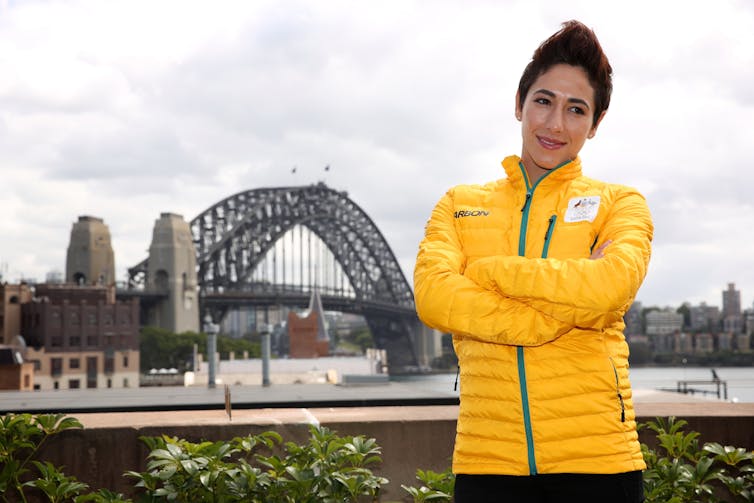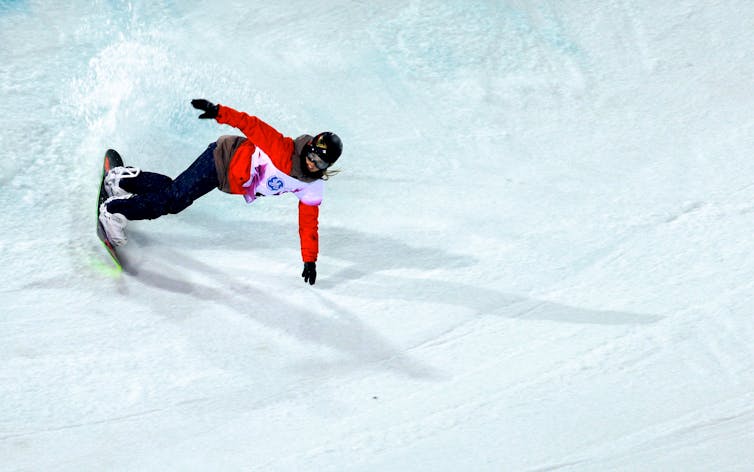The London 2012 Summer Olympic Games were declared the “women’s games” – with female participation in all sports and every nation represented by at least one female athlete. Although the Sochi 2014 Winter Olympic Games see the first women participating in the awe-inspiring sport of ski jumping, the Winter Olympics are yet to reach equality in participation between male and female athletes.
Women have participated since the the first Winter Olympic Games in Chamonix in 1924, with 11 women participants out of the total 258 competitors. But female athletes were only permitted to participate in two events – women’s figure skating and mixed pairs. In fact, figure skating remained the sole sport for female athletes until 1948 when skiing was opened as a competitive sport for women.
Women in Sochi
At this year’s Winter Olympics, women will compete in 14 sports, including: alpine skiing, biathlon, bobsleigh, cross country, curling, figure skating, freestyle skiing, ice hockey, luge, short track, skeleton, ski jumping, snow board and speed skating.
Nordic Combined, a sport that comprises ski jumping and cross-country skiing, remains the sole sport for males only.
Within each sport there are a number of events that are exclusively for men or women, and an increasing number of mixed-gender events. This Winter Olympics, the International Olympic Committee has introduced three new mixed-gender events: figure skating, luge and biathlon.
But the number of medals available for men remains greater than those for the female athletes.
As noted inThe New Yorker a few days ago, the inclusion of ski-jumping for women has been “the product of years of dedicated lobbying, and even a legal challenge mounted in 2009, by the sport’s participants and their supporters”. The inclusion of female athletes to the Winter Olympic sports has been slow, and unsurprisingly the more extreme or more physical sports have taken longer to permit female participation.
The bobsleigh was open to female competitors for the first time at Salt Lake City in 2002, and women’s ice-hockey in 1998. The rationale for this exclusion echoes arguments for female exclusion from sport events throughout the modern Olympic era, such as: the sports being too dangerous, or insufficient female participation to warrant inclusion. These arguments conveniently ignore the historical and structural barriers that have limited female participation in earlier Games.
For the Australian team at Sochi, this is the first time in the history of both the Summer and Winter Olympic Games that there are more women (31) in the team than men (29), and indeed more female medal hopes.
Australia’s female Winter Olympians

Australia’s participation and success at the Olympic Winter Games is extraordinary, particularly the climate, landscape and the distance away from the traditional home of winter sports in the Northern Hemisphere. Australia’s representation in the Olympic Winter Games dates back to 1936 at Garmisch- Partenkirchen in Germany and, since that time, the country has sent a team to all Winter Olympics except for the post-second-world-war Games in St Moritz, Switzerland in 1948.
Australia has been represented by just over 200 Winter Olympians, with nine medallists (five gold, one silver and three bronze medals).
Female athletes have been the exceptional performers for the Australian team. Aerial skiing legend Jacqui Cooper was selected for five Winter Olympics from 1994 – 2010, and Zali Steggall won bronze in the Slalom at Nagano in 1998.
The female aerial skiiers have been the success story of the Australian winter sports; with Australia winning medals at the last three Games in Salt Lake City 2002, Torino 2006 and Vancouver 2010. At Salt Lake City in 2002, Alisa Camplin became the Olympic aerials champion and also Australia’s first skiing gold medallist.
Four years later in Torino, Camplin produced another sensational performance to take bronze. Lydia Lassila won in Vanouver 2010 with an Olympic record total score of 214.74. Sochi 2014 is Lassila’s fourth Winter Olympic campaign.
The Vancouver 2010 Winter Olympic Games was Australia’s first Olympic Team of gender equality (20 men/ 20 women) and our most successful.

It was also the first time many Australians saw the exceptional skill of Torah Bright, winning Australia’s first Snowboard gold in the half-pipe event. At Sochi 2014, Bright made history, by qualifying in all three snowboarding disciplines – halfpipe, slopestyle and snowboard cross (although she missed out on a slopestyle medal on the weekend).
The Winter Olympics may not be familiar to many Australians; but our women have been leading the charge towards equality and success in the sport. The success and indeed visibility of our female winter Olympians helps challenge the traditional expectations and limitations placed on female athletes, particularly those like Bright, who are not only exceptional at their sport, but also pushing the boundaries for male and female athletes alike in their achievements.

